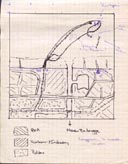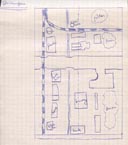Miniature Wargaming Club Leuven

'Schild en Vriend' is an old Flemish battlecry,
used in the rebellion
of the city of Brugge against the French, May
18, 1302. Legend tells
that it was used to differentiate between
the French-speaking (who could
not pronounce 'schild') and
Flemish-speaking citizens. Nowadays,
historians tell us that it was
probably 'Des Gilden Vriend'.

Raid on Zeebrugge
St. George's Day, 23 April
1918
This game was hosted by Schild en Vriend during Crisis 2001,
the annual Flemish wargaming convention hosted by Tin Soldiers Antwerp.
The game won the award for best scenery at the show, and was enjoyed by
a number of players who participated in the game. The Raid on Zeebrugge
follows a tradition of spectacular participation games hosted by Schild
en Vriend, which range from Wild West shoot-outs, ACW battles, Ancients
and of course Darkest Africa.
Theme
Every year, we start by thinking about possible themes for our yearly
convention game. We always try to strive for the following criteria: The
game has to be based on a historic event, possibly somewhat out of the main
interest streams in wargaming; the game needs to have spectacular scenery
; and if possible, it should have some connection to Belgian or Flemish military
history.
After some thinking and looking up history books, we came up with the
Raid on Zeebrugge. This was a World War 1 commando-action, in which British
troops stormed the mole of Zeebrugge (Belgium), and blocking ships were to
be placed in the harbour entrance. This all to prevent German submarines
for sailing into the Atlantic.
We decided that this game had sufficient elements to provide an interesting
convention game.
We will not repeat the entire story of the raid here, but you can find
a good history on http://www.mckenzie.uk.com/zeebrugge/
Game Design
In reality, the raid on Zeebrugge took place entirely on the mole of the
harbour, and the naval blocking action took place in the harbour entrance.
We decided early on that this would not produce a very interesting game,
so we extended the game to an full invasion, also involving the beaches around
Zeebrugge and the harbour itself.
We decided to allow an invasion with landing crafts, maybe somewhat uncharacteristic
for WW1, but from a game point-of-view, the correct thing to do (In reality,
troops were only put on land through big troop carrying ships on the mole).
We based the layout on maps we found in a number of books covering the
raid, and ended up with a wargames table measuring 2x2 meters. The
initial sketches (from which we deviated significantly afterwards) can be
seen below.

|

|
Overall plan of the gaming table. The mole and village
of Zeebrugge are modeled, as well as some fields to allow for infantry firefights.
|
Plan of the village, which was afterwards modified
to suit some more buildings.
|
Modeling
The terrain boards were modeled using styrofoam boards, which were plastered
with putty, then painted , drybrushed and flocked in various colors.
Buildings are from various manufacturers that produce HO scale accessories
for model train layouts.
Figures are 20mm and are from ...
The ships are a mix of pastic toy sets, scratch-built ships from wood, and
paper print-outs mounted on foam-board.
Pictures
These pictures were taken during the convention. Some of them are digitally
enhanced (removing borders between terrain boards, removing dice and markers,
some lighting effects added).
More pictures
Back to main page





















